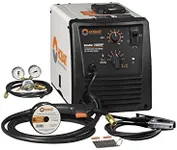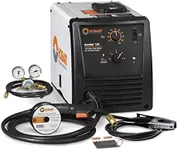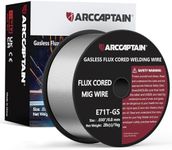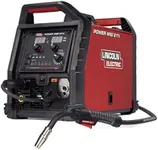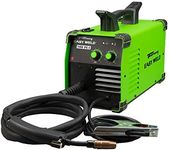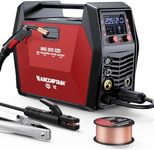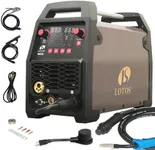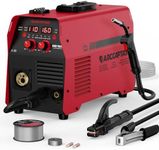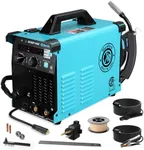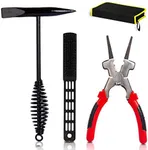Buying Guide for the Best Wire Welders
Choosing the right wire welder can be a daunting task, especially if you're new to welding. The key to making the right choice is understanding your specific needs and how different features of wire welders can meet those needs. Wire welders are versatile tools used for various welding tasks, from automotive repairs to heavy-duty industrial work. By focusing on the key specifications, you can find a wire welder that fits your requirements perfectly.Amperage RangeAmperage range refers to the range of electrical current the welder can produce. This is important because different materials and thicknesses require different amperage levels. For light-duty tasks like auto body work, a lower amperage range (30-140 amps) is sufficient. For medium-duty tasks, such as general fabrication, a mid-range (140-200 amps) is ideal. Heavy-duty tasks, like industrial welding, require a higher amperage range (200+ amps). Choose a welder with an amperage range that matches the thickness and type of materials you plan to work with.
Duty CycleThe duty cycle indicates how long a welder can operate continuously before needing to cool down. It is usually expressed as a percentage of a 10-minute period. For example, a 20% duty cycle at 150 amps means the welder can run for 2 minutes at 150 amps before needing an 8-minute rest. For occasional, light-duty work, a lower duty cycle is acceptable. For more frequent or heavy-duty use, a higher duty cycle is necessary to avoid interruptions. Consider your typical welding sessions and choose a welder with a duty cycle that matches your work pace.
Wire Feed SpeedWire feed speed controls how fast the welding wire is fed into the weld. This affects the quality and strength of the weld. A welder with adjustable wire feed speed allows you to fine-tune the welding process for different materials and thicknesses. For beginners or light-duty tasks, a lower wire feed speed is usually sufficient. For more advanced or heavy-duty tasks, a higher wire feed speed is beneficial. Choose a welder with a wire feed speed range that matches your skill level and the types of projects you plan to undertake.
Voltage ControlVoltage control allows you to adjust the welding voltage, which affects the heat and penetration of the weld. This is important for achieving strong, clean welds on different materials. Basic welders may have fixed voltage settings, while more advanced models offer variable voltage control. For beginners, fixed settings can simplify the learning process. For more experienced welders or those working with a variety of materials, variable voltage control provides greater flexibility and precision. Choose a welder with voltage control that matches your experience level and the complexity of your projects.
PortabilityPortability refers to how easy it is to move the welder around. This is important if you need to transport the welder to different job sites or if you have limited space in your workshop. Lightweight, compact welders are ideal for mobile work or small spaces. Heavier, more robust welders are better suited for stationary use in a dedicated workshop. Consider how and where you will use the welder and choose a model that offers the right balance of portability and performance for your needs.
Ease of UseEase of use encompasses features that make the welder user-friendly, such as intuitive controls, clear displays, and automatic settings. This is especially important for beginners who may be unfamiliar with welding techniques. Look for welders with features like automatic wire feed speed adjustment, clear voltage and amperage displays, and simple control panels. For more experienced users, advanced features like programmable settings and digital interfaces can enhance precision and efficiency. Choose a welder with ease-of-use features that match your skill level and help you achieve the best results.
